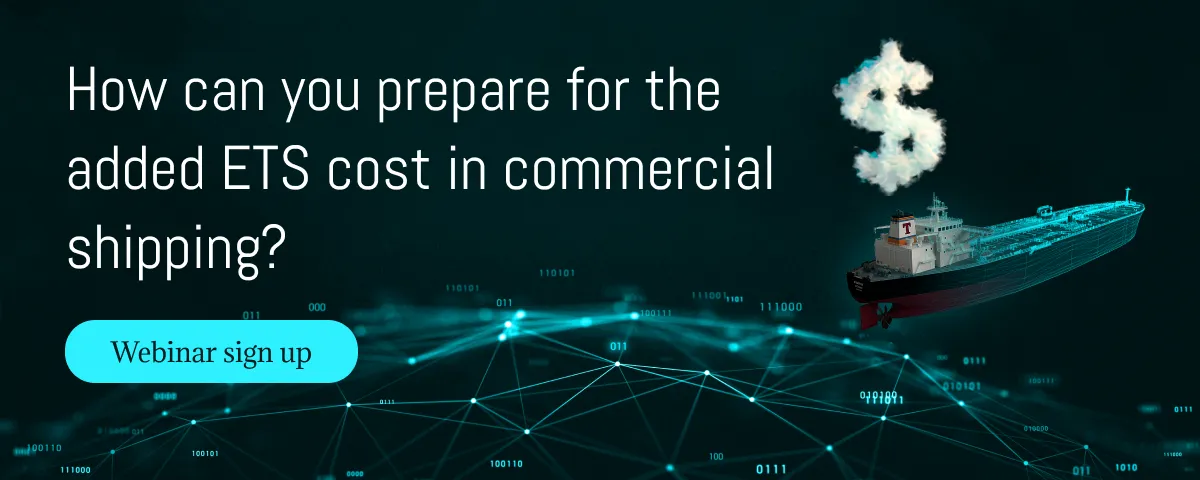Lorem ipsum dolor sit amet, consectetur adipiscing elit. Suspendisse varius enim in eros elementum tristique. Duis cursus, mi quis viverra ornare, eros dolor interdum nulla, ut commodo diam libero vitae erat. Aenean faucibus nibh et justo cursus id rutrum lorem imperdiet. Nunc ut sem vitae risus tristique posuere.
The EU Emissions Trading System (EU ETS) is a key tool for combating climate change and reducing greenhouse gas emissions cost-effectively. The maritime industry was included in the emissions trading scheme in January 2024, and shipping companies are required to purchase EU Allowances for their carbon emissions. We sum up the key aspects of the EU ETS from a maritme perspective.
There are no free allowances for the maritime industry. However, a phase-in period of requirements for the shipping industry is scheduled as follows:
Are you wondering how the carbon cost will impact your fleet? Or do you have questions about the inclusion of shipping in the EU ETS? Sign up for our on-demand webinar.

THE EUROPEAN UNION'S EMISSIONS TRADING SYSTEM
The EU ETS is a key tool for EU policy makers to combat climate change and for reducing greenhouse gas (GHG) emissions cost-effectively. It is the first largest and longest running international system for trading emissions allowances. The system today:
Since 2005 the EU ETS has set a cap on the total amount of GHG emissions that companies can emit each year. A fixed number of allowances, which are the currency of the carbon market, are issued. The cap is reduced over time so that total emissions fall. Within the cap, installations buy or receive emissions, which they can trade with one another as needed.
An EU allowance, or an EUA, is a permit to emit 1 tonne of carbon dioxide or its equivalent (CO2e). The price of the EUA fluctuates and can be followed at the European Energy Exchange (EEX).
There are no free allowances for the maritime industry. However, a phase-in period of requirements for the shipping industry is scheduled as follows:
Are you wondering how the carbon cost will impact your fleet? Or do you have questions about the inclusion of shipping in the EU ETS? Sign up for our on-demand webinar.
